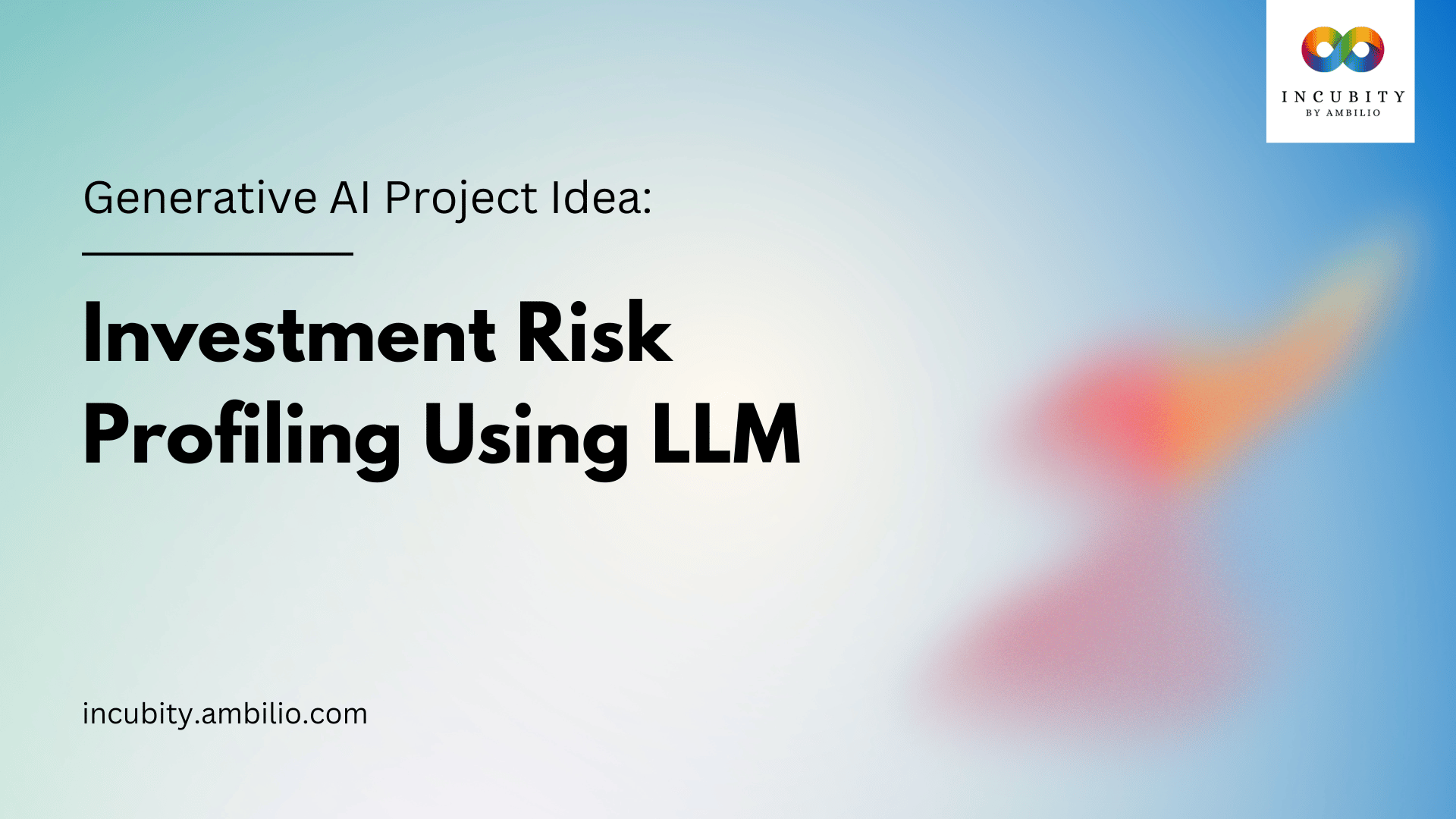In the world of finance, investment risk profiling is a critical process. It involves assessing an investor’s willingness and ability to take risks to align investment strategies with individual risk tolerance. Traditionally, risk profiling has relied on questionnaires and historical data analysis, which often fail to capture the nuanced preferences and changing financial circumstances of investors. This is where the integration of large language models (LLMs) such as GPT-4 can revolutionize the process. By leveraging advanced natural language processing (NLP) capabilities, LLMs can provide more accurate, personalized, and dynamic risk profiling.
The Need for Advanced Risk Profiling
1. Limitations of Traditional Methods
Traditional risk profiling methods are often static and one-dimensional. They typically involve standardized questionnaires that may not capture the complexity of an investor’s financial situation, goals, and psychological factors influencing risk tolerance. Moreover, these methods can be time-consuming and may not adapt quickly to changes in an investor’s circumstances.
2. Increasing Complexity of Financial Markets
Financial markets are becoming increasingly complex and volatile. Investors need tools that can analyze vast amounts of data, including market trends, economic indicators, and individual financial behavior, to make informed decisions. Large language models can process and analyze this data at a scale and speed unattainable by traditional methods.
3. Personalized Financial Advice
Today’s investors demand personalized financial advice. LLMs can analyze an individual’s communication, preferences, and behavior to offer tailored investment recommendations. This level of personalization can significantly improve the accuracy and relevance of risk profiling.
Technological Requirements
1. Large Language Models
A robust LLM such as GPT-4 is the cornerstone of this solution. The model needs to be trained on a diverse and comprehensive dataset that includes financial texts, market data, and behavioral economics literature.
2. Data Integration
To provide accurate risk profiling, the system must integrate various data sources. This includes financial transaction data, market trends, economic indicators, and personal financial information.
3. NLP and Sentiment Analysis Tools
NLP tools are necessary to analyze and interpret the textual data provided by investors. Sentiment analysis can gauge an investor’s emotional responses to market conditions, which is crucial for understanding risk tolerance.
4. Secure and Scalable Cloud Infrastructure
The solution requires a secure cloud infrastructure to store and process large volumes of data. Scalability is essential to handle increasing data loads and user demands efficiently.
5. User Interface and Experience (UI/UX) Design
An intuitive and user-friendly interface is vital for the adoption of the solution. Investors should be able to easily input their data and interact with the system to receive insights and recommendations.
Implementation Steps
1. Data Collection and Preparation
The first step involves collecting and preparing the data needed to train the LLM. This includes historical financial data, investor communication records, market trends, and economic indicators. Data cleaning and preprocessing are crucial to ensure the quality and relevance of the training dataset.
2. Model Training and Fine-Tuning
Using the prepared dataset, the LLM is trained to understand financial language and analyze market data. Fine-tuning the model involves iterative testing and validation to ensure it accurately interprets and responds to various financial scenarios and investor inputs.
3. Integration with Financial Platforms
The trained model is integrated with existing financial platforms and tools used by investors. This involves developing APIs and middleware to facilitate seamless data exchange and interaction between the LLM and these platforms.
4. Development of User Interface
A user-friendly interface is developed to allow investors to interact with the system. This includes features for data input, risk assessment visualization, and personalized recommendations. User feedback is essential during this phase to refine the UI/UX design.
5. Testing and Validation
Comprehensive testing is conducted to ensure the system’s accuracy, reliability, and security. This includes beta testing with a select group of investors to gather feedback and make necessary adjustments.
6. Deployment and Monitoring
Once testing is complete, the solution is deployed on a secure cloud infrastructure. Continuous monitoring is essential to ensure optimal performance and to make adjustments based on user feedback and evolving market conditions.
Advantages of the AI-Driven Approach
1. Enhanced Accuracy
LLMs can analyze vast amounts of data and interpret complex financial language, resulting in more accurate and nuanced risk profiles.
2. Dynamic and Adaptive Profiling
Unlike traditional methods, LLM-based profiling can adapt in real-time to changes in market conditions and an investor’s financial situation, providing up-to-date advice.
3. Personalized Recommendations
By understanding individual preferences and behaviors, LLMs can offer tailored investment strategies that align closely with an investor’s risk tolerance and financial goals.
4. Improved Investor Engagement
A user-friendly interface combined with personalized advice can enhance investor engagement and satisfaction. Investors are more likely to trust and rely on a system that understands and responds to their unique needs.
5. Scalability and Efficiency
The solution can handle large volumes of data and a growing number of users without compromising performance, making it suitable for both individual investors and large financial institutions.
Final Words
Investment risk profiling using large language models represents a significant advancement in the field of financial advisory. By addressing the limitations of traditional methods and leveraging the power of AI, this solution offers more accurate, dynamic, and personalized risk assessments. With the right technological infrastructure and implementation strategy, LLMs can transform how investors manage risk and make financial decisions, ultimately leading to better investment outcomes and greater financial security.



